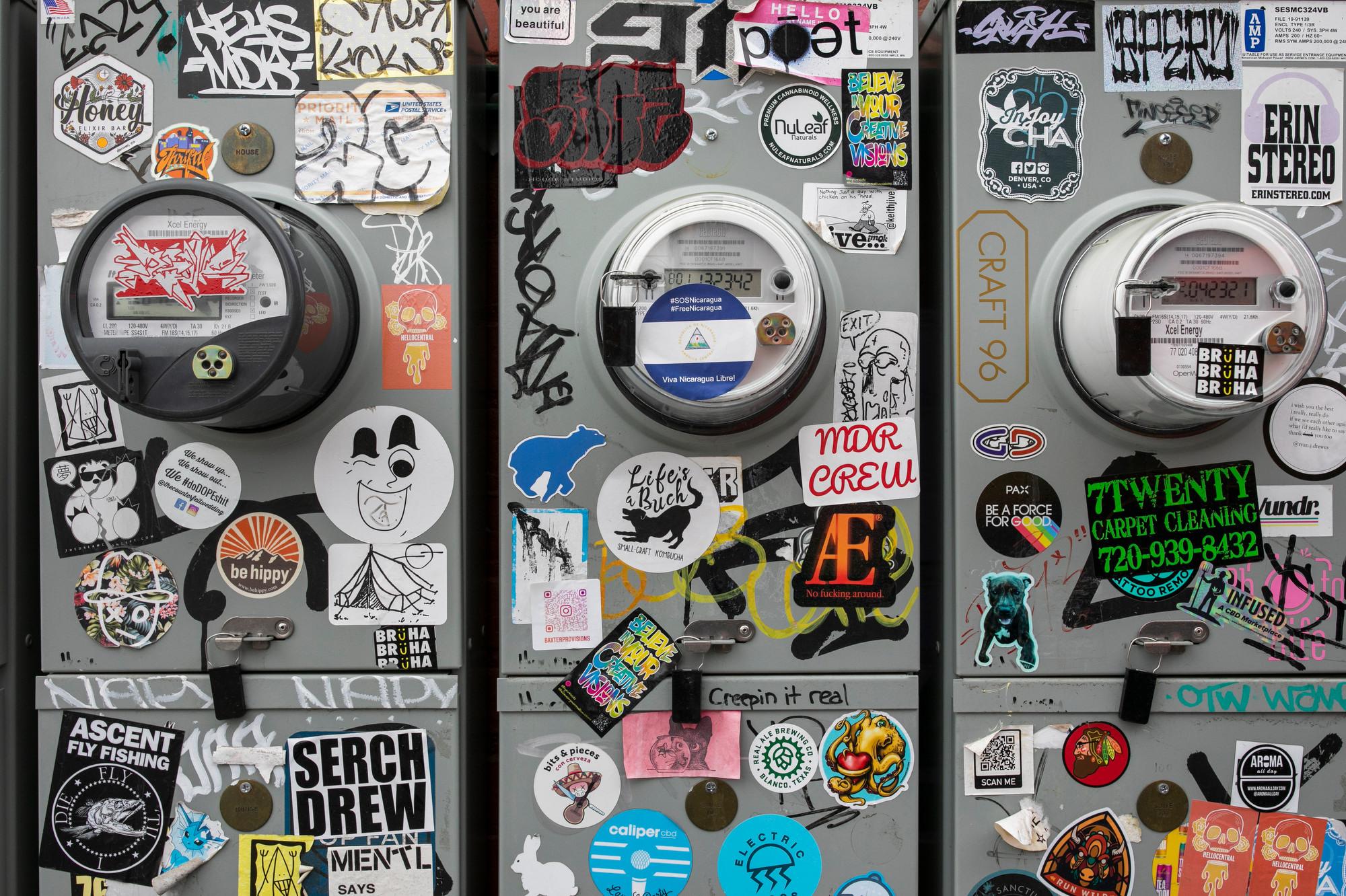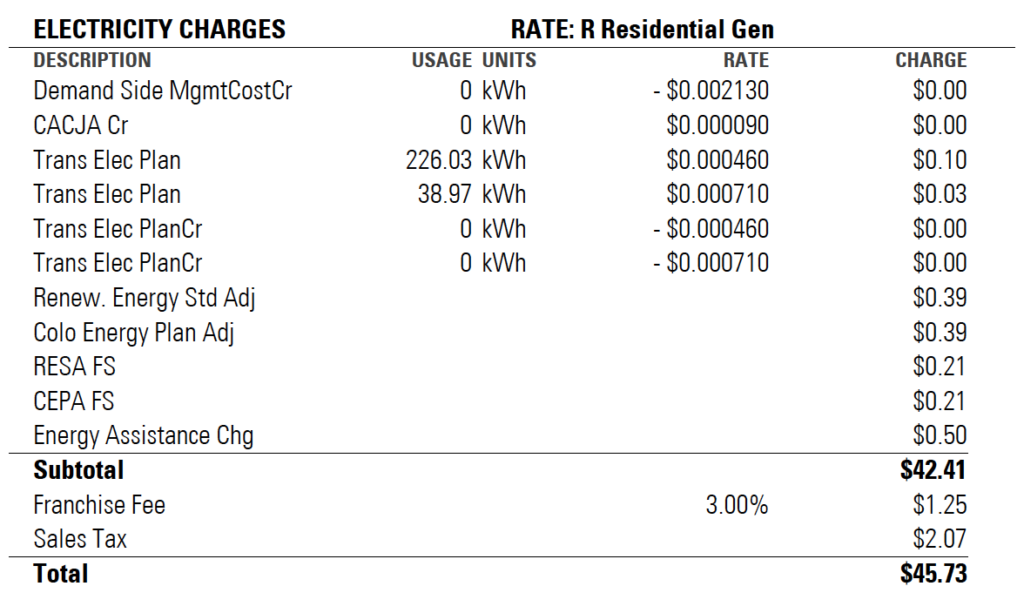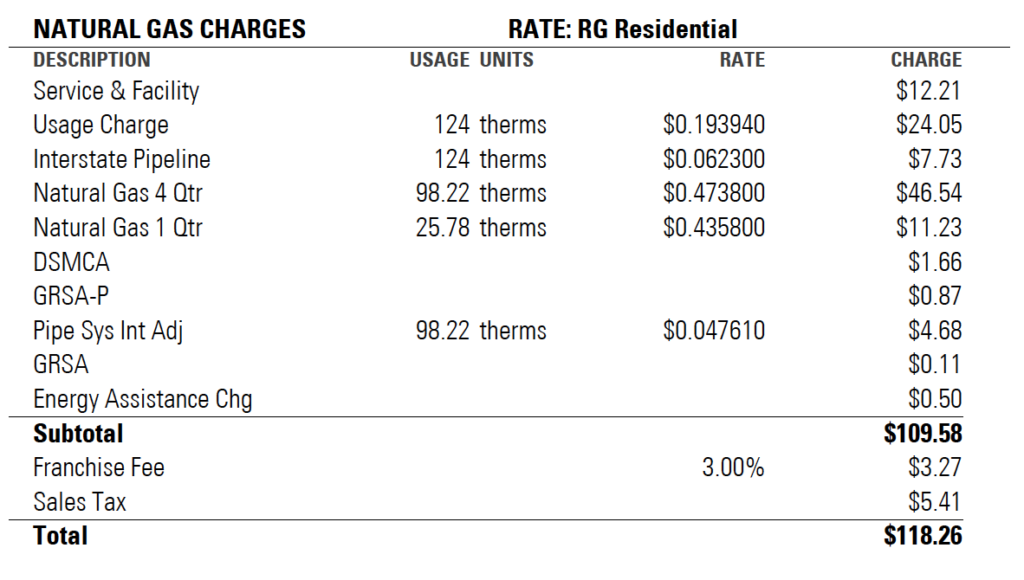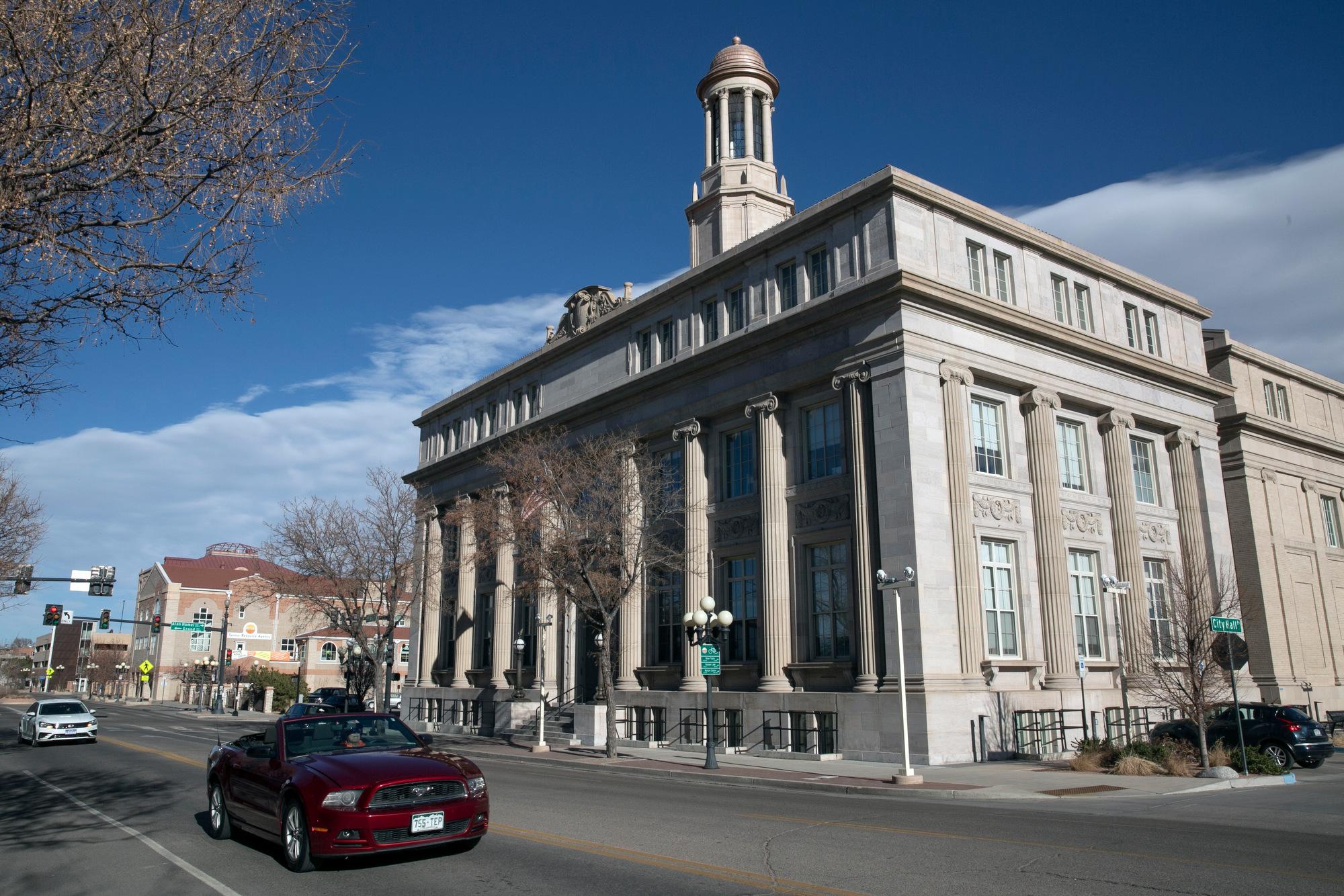
Cutting down on home energy costs is no longer as easy as just switching off the light when you leave a room or insulating the attic, said Denise Stepto, chief communications officer for Energy Outreach Colorado, a nonprofit that provides bill assistance to qualifying residents.
Natural gas prices on March 18 were nearly 85 percent higher than the same week last year, according to spot prices provided by the U.S. Energy Information Administration. Cooler temperatures in the Gulf Coast and uncertainty in the European natural gas market caused by the Russian invasion of Ukraine have all contributed to the increase, according to the EIA. And for most homeowners and some renters in Colorado, the cost to generate gas and electricity is constantly changing — as are the additional charges on their energy bills.
For customers of Xcel Energy, the largest for-profit utility company in the state, those charges are listed under their electricity and natural gas costs on their monthly energy bills.
The information in the bill is vague: a few cents here and there labeled as things like “energy assistance charge” and acronyms like “GRSA” (that stands for General Rate Schedule Adjustment). Those items, which are regulated and approved by the Colorado Public Utilities Commission, are charged to millions of people who live in areas covered by Xcel, including the Denver metro, Boulder and Grand Junction.
Some charges are driven by recent legislation to reduce greenhouse gas emissions from the energy sector, producing more energy from renewable sources instead of fossil fuels, said Energy Outreach Colorado Executive Director Jennifer Gremmert. Xcel and other utilities are looking to add new riders to recover money spent on inflated natural gas costs during a 2021 winter storm. Xcel is also starting to roll out “time-of-use” rates for customers using smart meters, charging different prices for electricity depending on the time of day.
What do all of these charges mean? And what can people do to keep their costs down — if anything? CPR News broke down the origins of those line-item charges and what they’re used for. The information comes from Xcel Energy’s own documents, including a glossary of terms, a tip sheet on how to read energy bills and the most current electric and natural gas rate books.
Let's first look at how your usage is calculated
The bars visualize your monthly electricity and natural gas use for the last 13 months. The tables show your daily average electricity use measured in kilowatt hours; natural gas use measured in therms, a unit of measurement for heat energy; and rates for both. Those values are compared with the same period from the previous year.
How to read the electricity portion of your bill

Xcel Energy’s current charges for electricity service as of Jan. 2022. Most bills include:
- Service & Facility
A flat monthly charge for meter reading, billing and customer service, as well as equipment, such as meters.
- Excess Energy Cr (Excess Energy Credit)
A credit paid to customers if they generated more energy than they used. This is also known as net metering for people who install solar panels on their homes.
- Winter Season
A charge for electricity used during the winter season, which runs from Oct. 1 through May 31. The Summer Season runs from June 1 to Sept. 30.
- Windsource Charge
A volunteer program started in 1998 for customers to receive electricity generated partly or entirely by wind power.
- Trans Cost Adj (Transmission Cost Adjustment)
Transmission costs not covered by base rates. Adjusted annually.
- Elec Commodity Adj (Electric Commodity Adjustment)
Costs of purchased energy and fuel, such as coal or wind, used to generate electricity. Adjusted quarterly.
- Demand Side Mgmt Cost (Demand Side Management Cost)
Used to recover costs for Xcel projects that reduce electricity demand, such as interruptible service option credits.
- Purch Cap Cost Adj (Purchased Capacity Cost Adjustment)
Costs to buy additional capacity to provide enough electricity for all customers.
- CACJA
This rider covers Xcel’s costs to meet its emissions reduction goals under the Clean Air Clean Jobs Act passed in 2010. This rider expired on Jan. 1, 2022.
- ElecCommodityAdjCr
Credits related to the Electric Commodity Adjustment.
- Trans Cost Adj Cr
Credits related to the Transmission Cost Adjustment.
- Purch Cap Cost Adj Cr
Credits related to the Purchased Capacity Cost Adjustment.
- Demand Side MgmtCostCr
Credits related to the Demand Side Management Costs.
- CACJA Cr
Credits associated with the CACJA.
- Trans Elec Plan (Transportation Electrification Plan)
A rider for Xcel’s Transportation Electrification Plan, which offers electric vehicle charging and rebate programs. This was first collected in March 2021 and is adjusted annually.
- Trans Elec PlanCr
Credits related to the Transportation Electrification Plan rider.
- Renew. Energy Std Adj (Renewable Energy Standard Adjustment)
Used by Xcel to increase the amount of energy generated by renewable sources, as required by a state amendment passed in 2004. Expires on Dec. 31, 2022.
- Colo Energy Plan Adj (Colorado Energy Plan Adjustment)
A rider to recover costs associated with the early retirements of two coal-fired generators of the Comanche Generating Station in Pueblo.
- RESA FS
RESA “fair share” costs for solar customers.
- CEPA FS
CEPA “fair share” costs for solar customers.
- Energy Assistance Chg (Energy Assistance Charge)
Fifty cents charged as part of a new state law for bill assistance or home weatherization for low-income households. The charge began on Oct. 2021 and will continue until Sept. 2022.
NOTE: In addition to the electricity charges, the bill also includes a franchise fee paid to cities and towns as part of Xcel’s agreement to provide electricity service and sales tax.

How to read the natural gas portion of your bill

Xcel Energy measures your energy use through your home’s energy meter, taking the current reading and subtracting the reading from the previous billing period. Natural gas is measured in one hundred cubic feet and converted to therms. Xcel Energy’s current charges for natural gas service as of Jan. 2022. Most bills include:
- Service & Facility
A flat monthly charge for meter reading, billing and customer service, as well as equipment such as meters.
- Usage Charge
Any gas service costs not covered by other charges, including the cost of intrastate pipes, compressors and storage facilities.
- Interstate Pipeline
Recovers costs paid by Xcel to upstream pipeline and facility operators to deliver gas to the company’s system.
- Natural Gas 4 Qtr
The natural gas rate during the fourth quarter of 2021.
- Natural Gas 1 Qtr
The natural gas rate during the first quarter of 2022.
- DSMCA (Demand Side Management Cost Adjustment)
Used to recover costs for Xcel projects that reduce natural gas demand.
- GRSA-P
The General Rate Scheduled Adjustment - Pipeline Systems Integrity Adjustment, a rider adjusting base rates as approved by the latest revenue requirement rate case.
- Pipe Sys Int Adj (Pipeline System Integrity Adjustment)
A rider used by Xcel to inspect, repair and replace pipelines in Colorado. This expired on Jan. 1, 2022.
- GRSA
The General Rate Schedule Adjustment, a rider adjusting the charge for gas service to account for base rate revenue increases and new rates.
- Energy Assistance Chg (Energy Assistance Charge)
Fifty cents charged as part of a new state law to provide assistance for customers who are behind on their gas bills and pay for weatherization programs to reduce home heating costs. The charge began on Oct. 2021 and will continue until Sept. 2022.
NOTE: In addition to the aforementioned natural gas charges, the bill also includes a franchise fee paid to cities and towns as part of Xcel’s agreement to provide natural gas service and sales tax.
- Non-Recurring Charges/Other Recurring Charges
Specific charges or credits. They could include rollover transfers from your membership to a solar bank or late payment charges.
What can you do about those charges?
Changing the way that energy is generated and delivered will result in higher costs, Gremmert said. Energy Outreach Colorado, she added, wants to help low-income households pay for that transition and become more energy efficient.
Despite the market controlling energy prices and regulators approving riders and other line-item charges, Stepto and utility companies still encourage customers to find ways to conserve energy in their homes.
Adding solar panels, insulating walls and attics and replacing older appliances does help reduce utility costs and greenhouse gas emissions. Over the years, the upgrades could lead customers toward using less energy than they create, drastically reducing or eliminating energy costs.
More stories about energy in Colorado
- Colorado utility bills are getting harder to understand. Just ask this Denver software manager
- Xcel Energy could overcharge customers ‘tens of millions of dollars’ after last year’s cold snap, state watchdog says
- High gas prices mean we should just pump more oil in Colorado, right? Not so fast
- The behind-the-scenes plan to protect natural gas stoves and furnaces in Colorado









